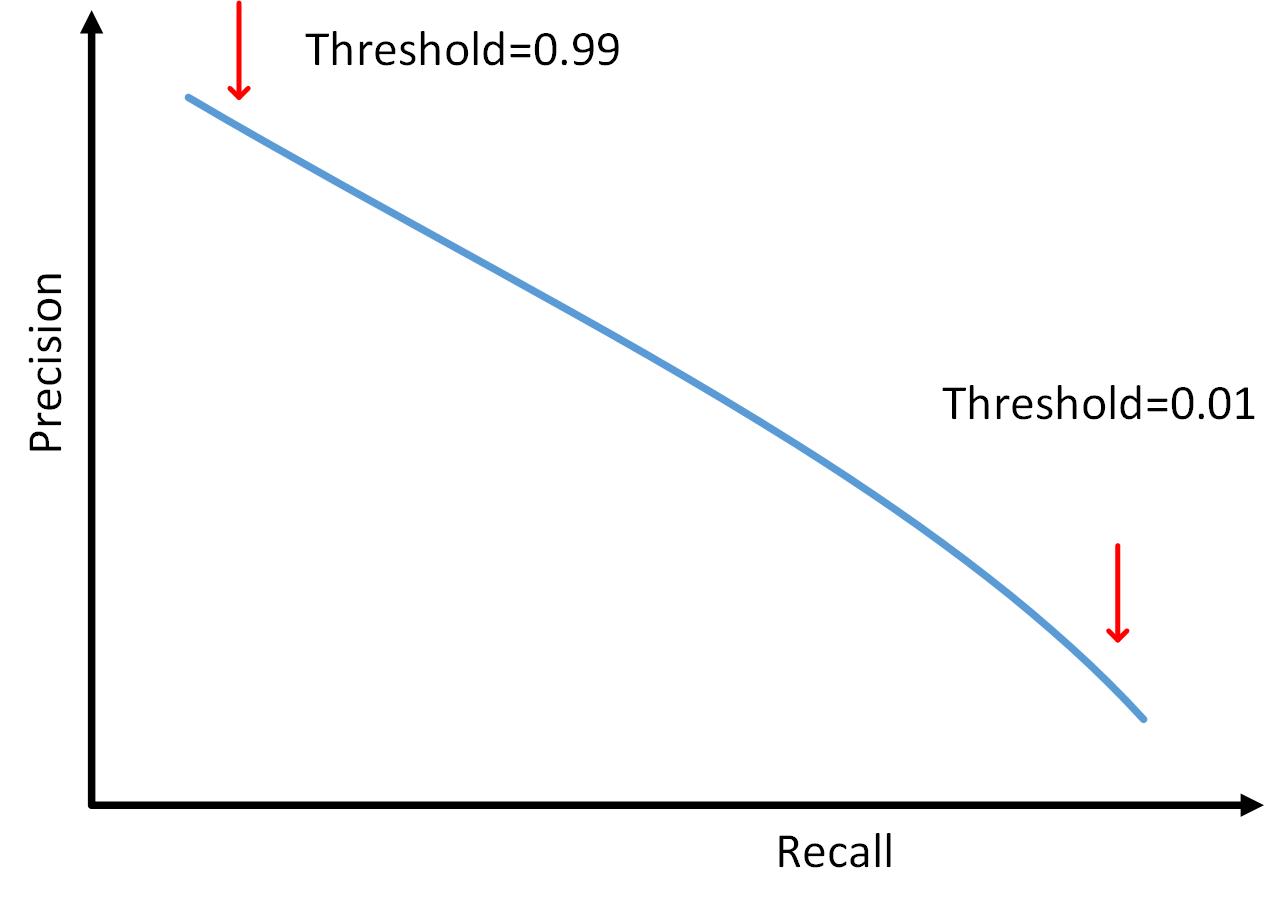机器学习系统设计——误差矩阵
对于癌症检测的例子来说,y=1代表有癌症(1代表数目比较小的类)
Precision/Recall
| Actual | class | ||
| 1 | 0 | ||
| Predicted | 1 | True positive | False Positive |
| class | 0 | False negative | True negative |
\[\Pr ecision = \frac{{True \bullet positive}}{{predicted \bullet positive}} = \frac{{True \bullet positive}}{{True \bullet positive + Fake \bullet positive}}\]
\[{\mathop{\rm Re}\nolimits} call = \frac{{True \bullet positive}}{{actual \bullet positive}} = \frac{{True \bullet positive}}{{True \bullet positive + Fake \bullet nagative}}\]
如果算法有“High precision”和“High recall”,我们就比较自信的认为这个算法是可以的。
在运用逻辑回归预测癌症的例子中
逻辑回归:0≤hθ(x)≤1
预测为1:hθ(x)≥0.5
预测为0:hθ(x)<0.5
假设我们想在有癌症的情况下预测y=1
如何做到在非常自信(非常高的准确率)的情况下给出预测结果?
这时需要适当改变“threshold”
预测为1:hθ(x)≥0.7
预测为0:hθ(x)<0.7
这样做的结果你就会有“High precision”,但是会有“low recall”
“low recall”也是非常糟糕的情况,这种情况下你很可能会告诉一个有癌症的病人说他没有。。
这时需要适当改变“threshold”
预测为1:hθ(x)≥0.3
预测为0:hθ(x)<0.3
这样做的结果你就会有“High recall”,但是会有“low precision”,同样糟糕。。
可以画出不同“threshold”情况下的“precision”和“recall”

这样你可以根据需要选择“threshold”
如何根据“Precision”和“recall”选择算法?
现假设有不同算法的“Precision”和“recall”
| Precision(P) | Recall(R) | Average | F1Score | |
| Algorithm 1 | 0.5 | 0.4 | 0.45 | 0.444 |
| Algorithm 2 | 0.7 | 0.1 | 0.4 | 0.175 |
| Algorithm 3 | 0.02 | 1.0 | 0.51 | 0.0392 |
一种方法是使用两者的平均值
\[A{\mathop{\rm var}} age:\frac{{P + R}}{2}\]
这样做算法3会有比较高的得分,但是这样不太合理
一种是F1Score
\[{F_1}Score:2\frac{{PR}}{{P + R}}\]
这是大多数人的用法
注意:这里的不同算法也可以是同一个算法取不同“threshold”时的情况。


